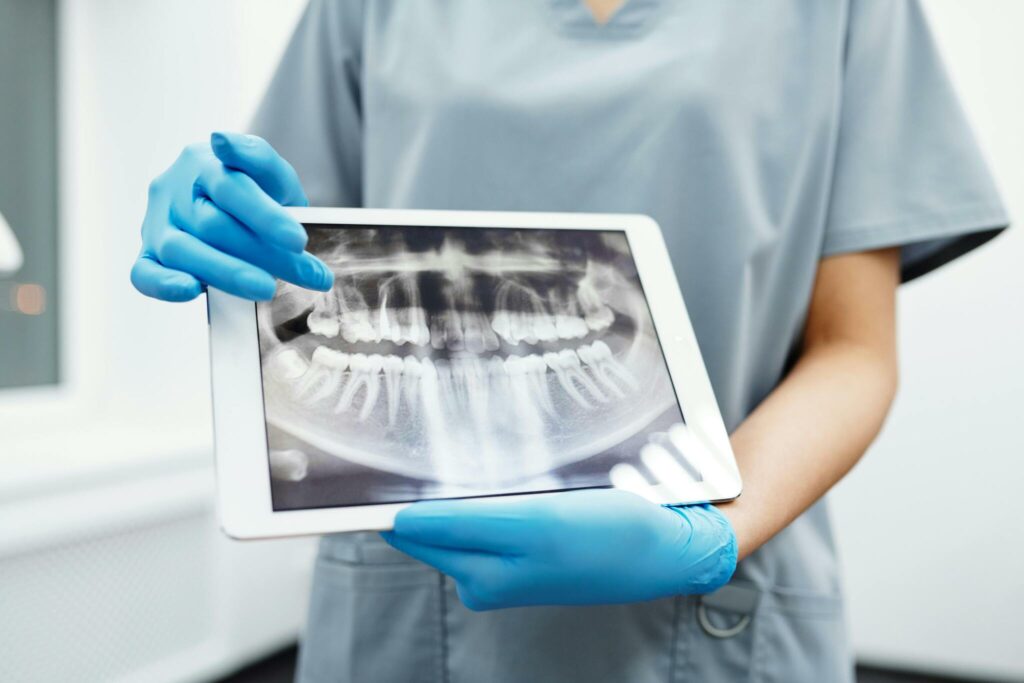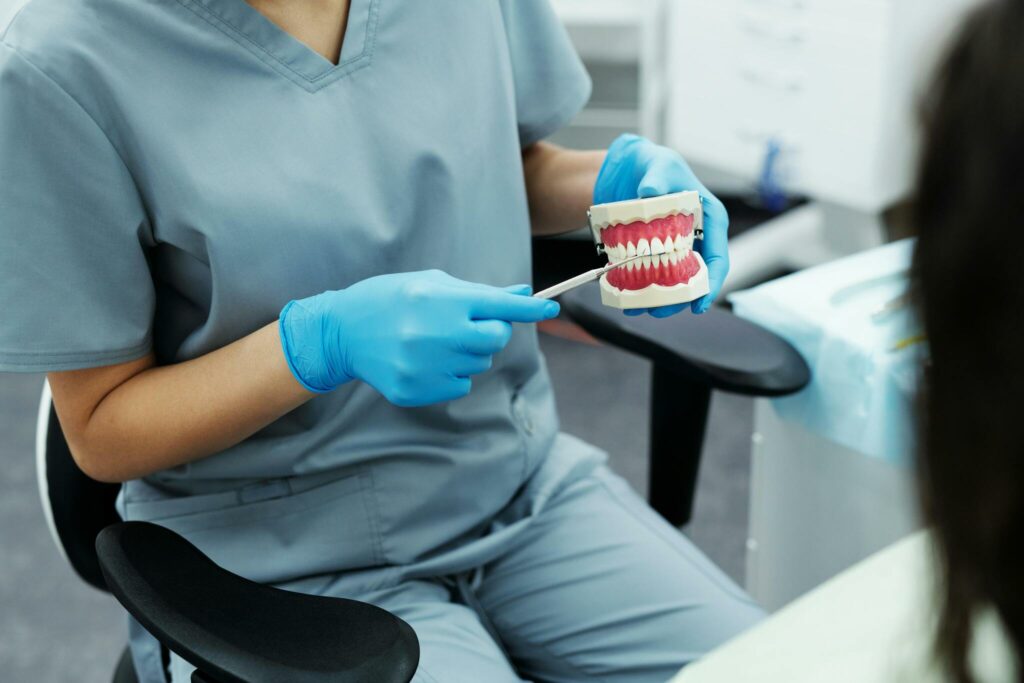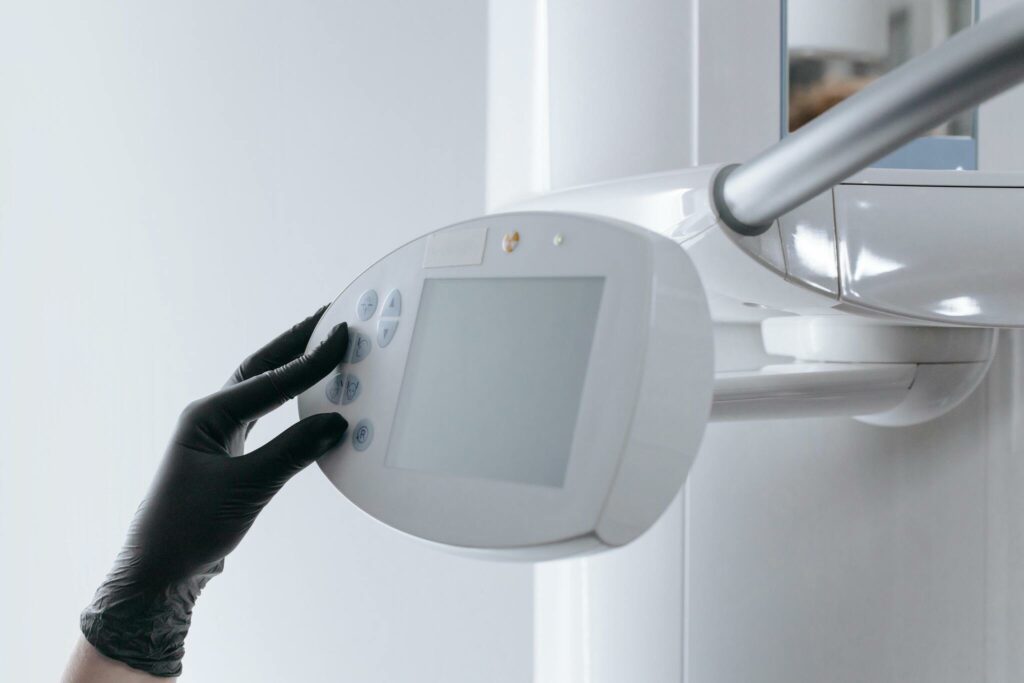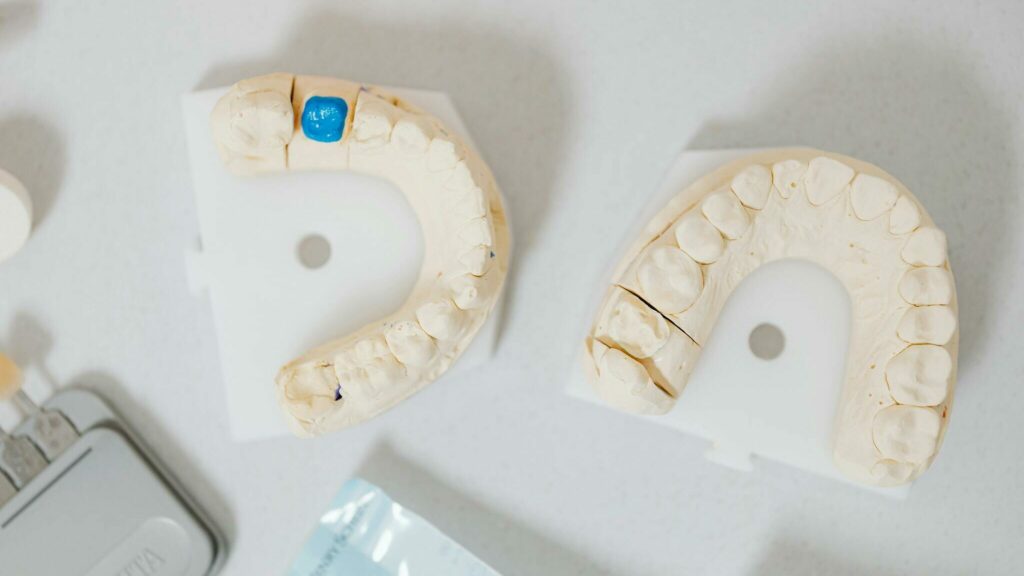
Bite Elevation
Bite elevation is a dental procedure aimed at restoring reduced bite height, often lost due to tooth wear, misaligned bites, or other factors. This intervention is not only aesthetic but also functional, helping to address a variety of oral health issues.
When Is Bite Elevation Recommended?

This procedure may be advised in the following situations:
- Tooth Wear:
Tooth wear is one of the most common causes of reduced bite height. It may result from:
- Bruxism (teeth grinding): Nighttime grinding or excessive daytime clenching leads to enamel erosion.
- Aging: Teeth naturally wear down over time, especially if not properly maintained.
- Misaligned Bite: Improper contact between teeth can lead to uneven wear.
These problems can impair chewing function, cause jaw joint pain, and negatively impact aesthetics. Worn teeth may appear disproportionate, altering the appearance of a smile.
When tooth enamel—the hard outer layer—wears down, dentin (a softer, porous inner layer) becomes exposed. Dentin readily absorbs pigments from food, drinks, or tobacco, causing worn teeth to look darker or yellowish. This not only affects aesthetics but also increases sensitivity to heat, cold, and acids, potentially leading to other oral health issues.
- Jaw Joint Issues:
Reduced bite height can lead to jaw joint problems, such as:
- Pain during jaw movements.
- Tinnitus (ringing in the ears).
- Jaw clicking or restricted motion.
Bite elevation helps restore proper joint positioning and alleviate these symptoms.
- Misaligned Bite:
Some patients have congenital or acquired bite misalignment. Addressing these issues often requires bite elevation to ensure correct tooth and jaw alignment. - Aesthetic Concerns:
Bite elevation is often performed to improve smile and facial aesthetics. Reduced bite height can deepen facial wrinkles, alter lip position, and even change facial structure.
Stages of the Procedure
Bite elevation is a complex process that requires a carefully tailored treatment plan and patient cooperation:
1 – Diagnosis and Treatment Planning

The dentist conducts a thorough oral examination, assessing tooth condition, bite height, and overall oral health. Common diagnostic tools include:
- X-rays.
- CT scans.
- Digital or physical models.
2 – Temporary Bite Restoration

Temporary overlays or prosthetics are often used to allow the patient to adjust to the new bite height and help the dentist evaluate necessary adjustments.
3 – Final Procedure

The final stage may involve several treatments, depending on the patient’s needs:
- Restorative Fillings: For minor damage, tooth height and shape are restored using composite materials.
- Prosthetics: Crowns, veneers, or overlays are commonly used for severely worn or damaged teeth.
- Orthodontics: In some cases, braces or aligners are required before bite elevation.
Benefits of Bite Elevation
- Restored Chewing Function:
Proper bite height ensures efficient chewing, improving food processing, digestion, and reducing strain on the stomach. - Tooth Protection:
Restoring bite height prevents further wear, extends tooth lifespan, and reduces the need for future complex restorations. - Reduced Jaw Pain:
Corrected bite height alleviates jaw joint discomfort and related symptoms. - Enhanced Smile and Facial Aesthetics:
Bite elevation restores proper tooth height, improving smile appearance, lip position, and facial proportions, helping patients look younger and feel more confident. - Improved Long-Term Oral Health:
Bite height restoration helps prevent gum recession, tooth sensitivity, and other problems associated with misaligned or worn bites.
Risks and Complications

As with any medical procedure, bite elevation has some risks:
- Initial discomfort while adjusting to the new bite height.
- Rarely, improperly fitted restorations or prosthetics may require additional adjustments.
How to Prepare for Bite Elevation
Before the procedure, patients should:
- Consult with their dentist to discuss expectations and potential outcomes.
- Maintain excellent oral hygiene to minimize the risk of complications.
- Prepare for a temporary adjustment period, which may last several weeks or months.
Patient Experiences
Many patients report significant improvements in their quality of life after bite elevation. Common benefits include:
- Enhanced chewing function.
- Reduced jaw pain.
- Increased confidence in their smile.
Bite elevation is an innovative and effective dental procedure that not only resolves functional issues but also enhances aesthetic appearance. It is an excellent choice for those seeking both a beautiful smile and better overall oral health.
